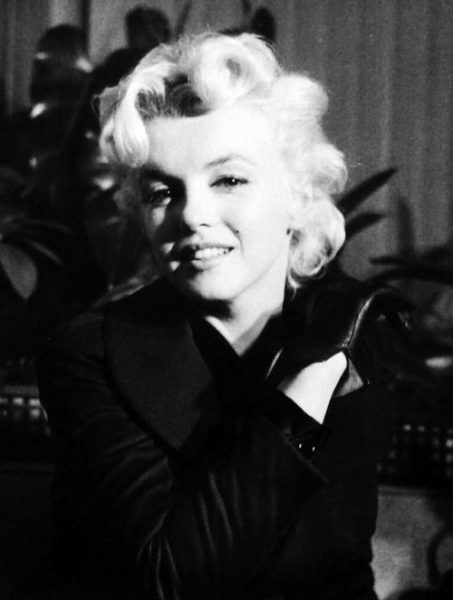The New Yorker‘s Richard Brody considers two overlooked moments in Monroe lore: her return to Hollywood in 1956, and her opening scene in the unfinished Something’s Got to Give (1962.) Brody also contrasts the condescension that Marilyn often received from the press with the overt hostility directed at her young admirer, Lindsay Lohan.
“Here’s Marilyn Monroe, interviewed on February 25, 1956, upon her return to Hollywood for the filming of Bus Stop. Part of this clip, along with the story behind it, is featured in Liz Garbus’s fascinating new documentary, Love, Marilyn…
Look at Marilyn Monroe, about twenty seconds into the clip, when a journalist ‘asks,’ without a question mark at the end of the sentence, ‘You’re a happy girl now.’ The infinitesimal silence that goes with her dubious glance—a tightly controlled eye-roll—away from the interviewer, followed by her ironic verbal shrug (a melodic ‘uh-h’ with a subtly derisive smile), suggests the equivalent of, ‘You have no idea.’ It’s in that sudden abyss of true and horrific emotion in the midst of the most conventionally candied context that encapsulates Monroe’s art—and art it is…
One of Monroe’s most moving performances is the one that seems to come from beyond the grave—it’s from the 1962 film Something’s Got to Give, from which she was fired soon before her death and which was never completed. The remaining footage, however, has been put together. It’s a remake of the 1940 comedy My Favorite Wife, with Monroe playing a woman who, having spent years shipwrecked aboard a desert island and being declared dead, returns home to find her husband remarried. Monroe comes through the gate six minutes in; she has the magical, floating, unreal aspect of a ghost. She hadn’t worked for more than a year, and she seemed to be returning from far away to a place where she belonged but may not have been welcome.
It’s too soon to know whether Lohan is in Monroe’s league (is anyone?)—she hasn’t had enough adult roles or enough good directors yet—but she did some extraordinary work before turning twenty, the age at which Norma Jeane Baker signed her first movie contract…Lohan isn’t the first great actress to confront addiction and other personal crises, but she has the misfortune to be living in an age of total exposure, when no studio publicist or code of silence can restrain reports of her sufferings as well as of her escapades…”


